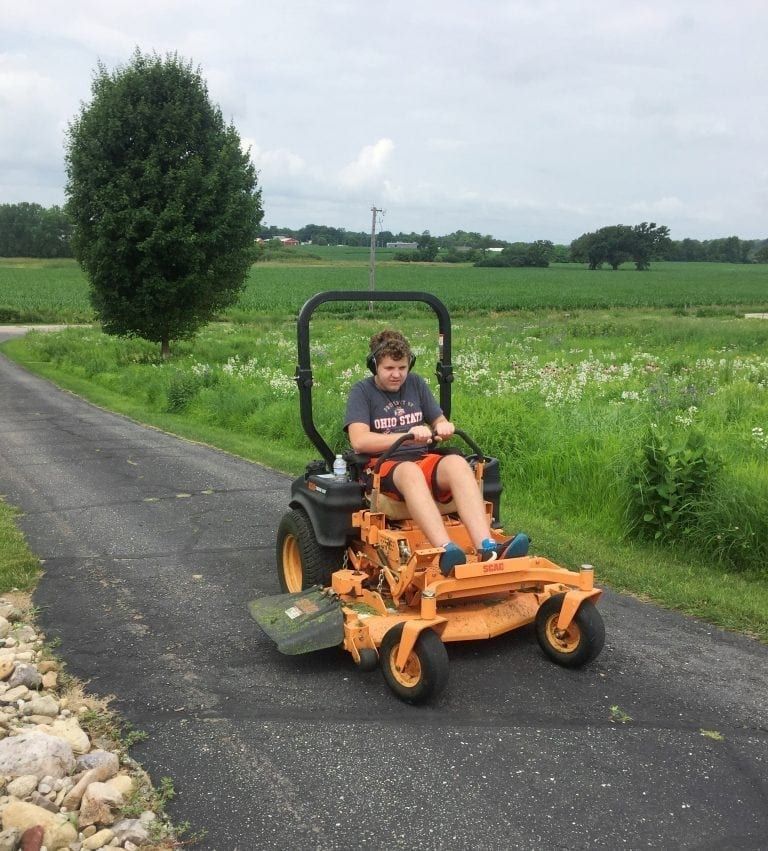NATURAL & ORGANIC LAWN CARE
CATEGORIES
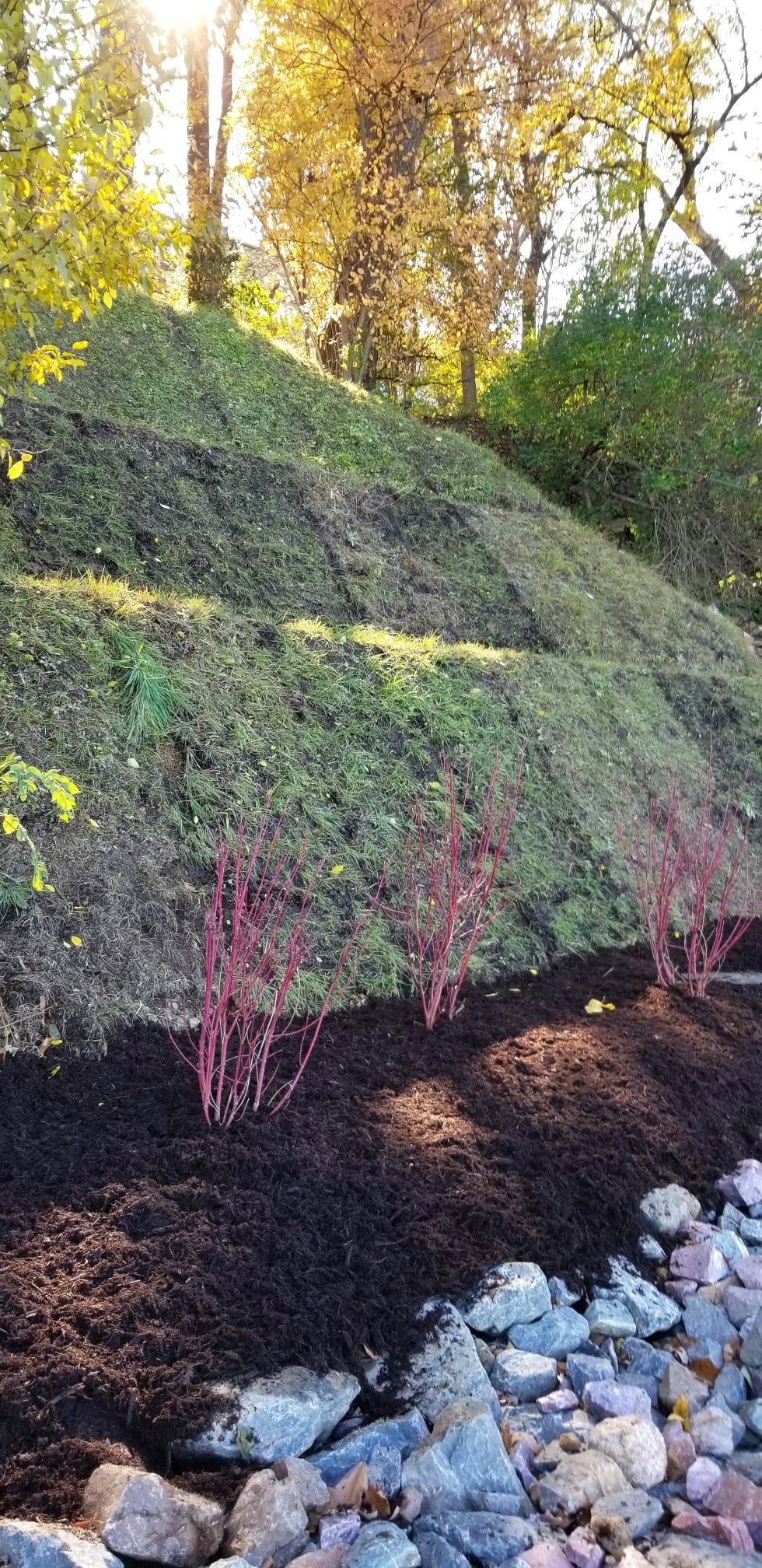
December 6, 2023
Native perennials are not only aesthetically pleasing and beneficial to local flora and fauna, but also a great means of erosion control. Root systems of perennials are exponentially deeper than standard turf grass and persist for years. Roots can anchor down into the soil up to 15 feet, making them great soil stabilizers. These roots are also able to capture phosphorus runoff before they can reach our ground water supply. As we know, phosphorus run-off from agricultural production is a culprit in producing blue-green algae blooms in our Wisconsin lakes and rivers. Also with great big roots, perennials can out-compete weeds or harmful invasive species, reducing the need for toxic herbicide application. Additionally, these roots establish channels throughout the soil, providing aeration, water, and nutrient flow for neighboring plants. Perennials provide moisture to soil, making the soil less prone to drying out and erosion. Deep roots can reach nutrients that are not found in top soil. Perennials bring these out-of-reach nutrients to other plants which can benefit. These long root systems take in all the nutrients perennials need, requiring less work from the gardener. Formecology just recently completed a shoreline project at Frank Lloyd Wright’s John Pew House residence in which we installed erosion control measures on a hillside facing Lake Mendota. We blanketed the hillside with Envirolok, LLC native vegetative mats. The beauty of these perennial mats is that they provide an instant plant matrix to make the hillside stronger against erosion over time as the roots grow. We are very excited to see the hillside grow and bloom in years to come.
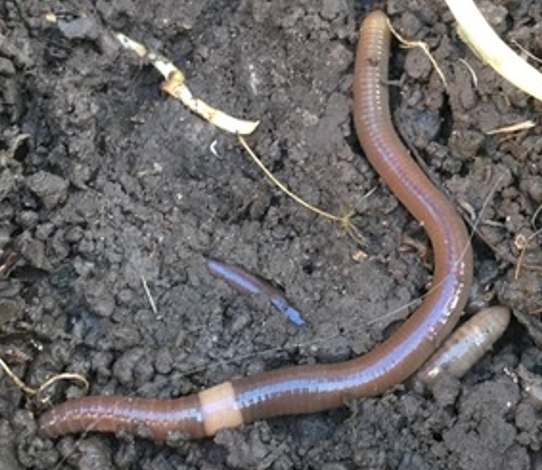
December 6, 2023
Working on a variety of sites we have seen the growing presence of jumping worms. Often our team will see crumbly, granular, loose soil—a sure sign of their invasion. You may have heard their name mentioned, “Asian jumping worms”, “crazy worms”, or “snake worms”, in horticultural contexts. Normally earthworms are beneficial to soil and plant health, however, these invasive species are destructive with a multitude of effective survival tactics. They first appeared in Wisconsin in 2013, and still there is much uncertainty regarding how they are to be eradicated. There are a few treatments available on the market that we at Formecology may try out for our clients. Before then, we will have to do some test runs. With awareness, background knowledge of their life history and appearance, and management, we can ensure a healthier ecosystem. There is a lot to consider here and research to be done in the coming years. We would love to hear your experiences (successful or not) in dealing with these crazy worms. Leave us a comment below! Appearance: “dry” appearance with bluish sheen. White clitellum (band in which the eggs are produced) and a length of 6-8 inches. Worms famously exhibit a fast “flailing” motion. This rapid thrashing helps escape predators with a 50% chance of survival. Presence often marked by pelleted soil clumps on soil surface. How They Spread: commercial compost and mulch, nursery stock, leaf piles, fish bait, raking, leaf blowing. Problem: Jumping worms wreak havoc to soil and plant health. They grow and reproduce more rapidly and consume more nutrients than any other earthworm in Wisconsin. Additionally, their eggs are protected by a cold and drought resistant cocoon that can withstand -40 degrees Fahrenheit! These cocoons are about the size of a mustard seed and are dark brown in color—easily hidden amongst soil. Jumping worms are parthenogenic, meaning they do not require a mate to reproduce. Worms typically produce up to 60 cocoons per clutch and can complete 2 generations within one year. These worms move fast too, expanding their territory up to 40 yards a year. These worms feed on plant roots, and beneficial mycorrhizae fungi, and disturb healthy soil. Soil affected by jumping worms has decreased moisture, compacted soil, increased erosion, and an increased risk of pathogens. This soil proves to be poor in structure and support for plants. In turn, this soil harbors a poor quality environment for native plants to grow and gives invasive plant species a chance to establish themselves. In a jumping worm-invaded habitat canopy cover may be thinned out as well as ground cover. The lack of vegetation exposes ground dwelling critters to potential predators resulting in reduced biodiversity of animals. Another issue presented by the worms is their 80% bio-accumulation of airborne heavy metals. Animals consumed by humans, such as chickens, eat these worms, and the heavy metals are passed down to humans causing potential health issues. Where: Dwell on soil surface, no deeper than 2-4 inches below the soil. Life Cycle: APR-MAY: worms hatch from egg/cocoon JUN-JUL: worms feed & grow ßthis is the best time to conduct an initial treatment AUG-SEP: worms lay eggs ß best time to conduct 2 nd treatment 1 ST FREEZE: adult worms die WINTER: eggs are protected in cocoons Management: Prevention: Buy landscape materials (plants, compost, mulch) free of cocoons and worms. Purchase mulch and compost that has been heated to 140 degrees Fahrenheit. Cocoons cannot survive beyond 104 degrees as well as pathogens. The Flower Factory nursery (located in Stoughton) has a 100% jumping worm-free guarantee as they sterilize their soil. If spotted: remove and destroy worms by sealing in a bag and throwing away. Apply treatment. Treatments: Early Bird: Advertised as a 3-0-1 fertilizer that was originally developed for golf course turf. Contains chicken droppings, kelp, and tea seed oil. The solution is potent and is to be diluted 20x before application. It is not recommended to spray an entire soil patch affected by worms, rather apply to new plants being introduced to the garden. If you do end up treating a large portion of soil, ensure the solution does not go further than 6 inches below, as that is where beneficial earthworms dwell. Within 10 minutes of application worms come to the soil surface. Within 20 minutes the worms are dead. Something to consider is that Early Bird lake run-off could harm fish. Finely-ground Biochar: Just a small amount added to infested soil can kill worms in 16 days. The sharp edges of the charcoal are designed to cut the guts of the worms. A question that popped into our heads: is biochar selective for crazy worms, or does it harm beneficial worms as well? Fungus: Bavaria bassiana (BotaniGard): Secretes enzymes that weaken bugs’ coats. Effectively kills worms in two weeks and kills approximately a ¼ of cocoons. We wonder if this fungus would be harmful to beneficial insects, like our pollinators. While it is too late in the season for treatment application, Formecology is keeping its eyes out for new, eco-friendly, safe solutions. Stay tuned!
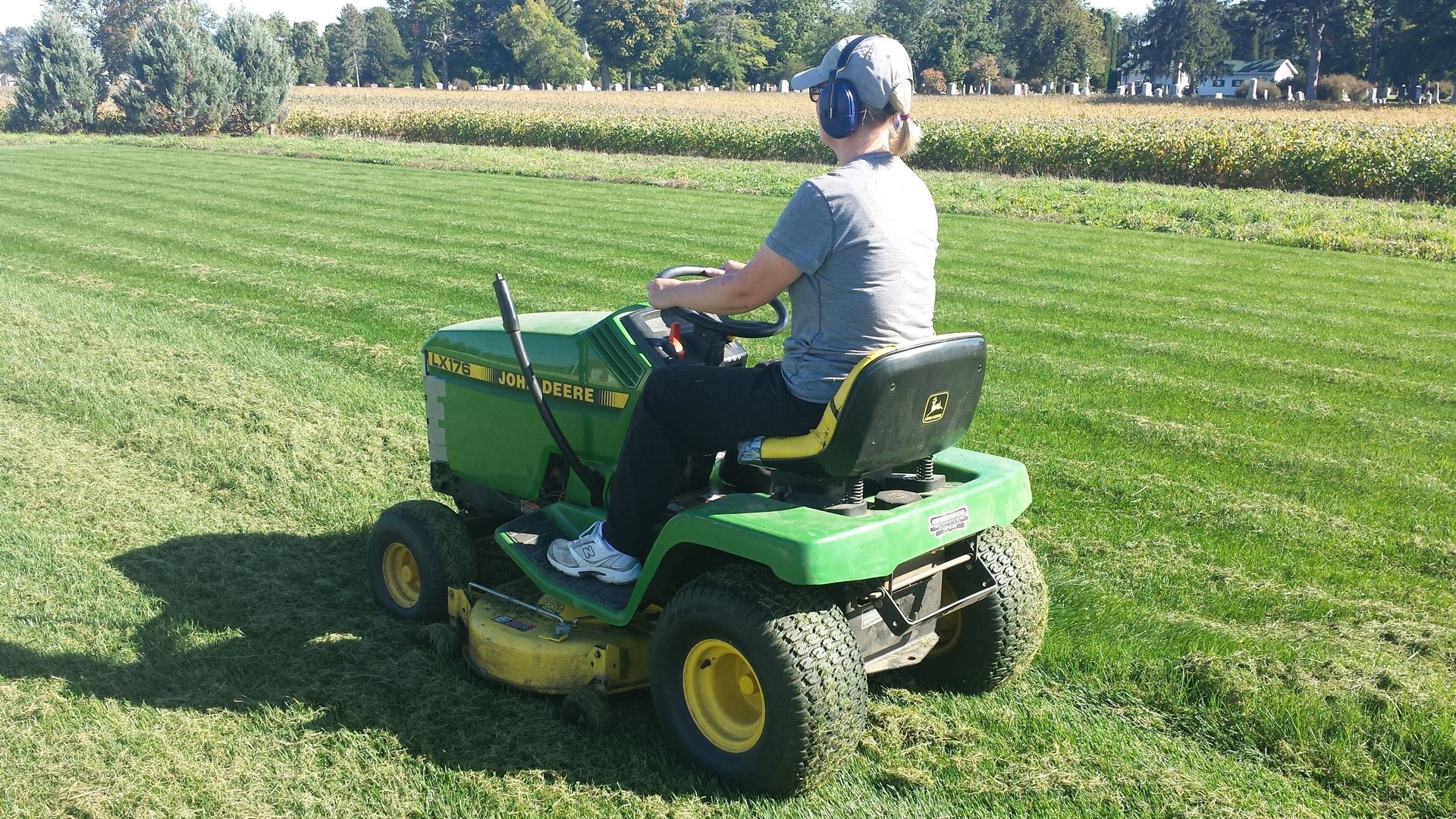
December 6, 2023
It’s hard to believe that winter is right around the corner. We have enjoyed a great season and hope you have also. Before the snow begins to fall, we wanted to take an opportunity to remind you of some important fall landscape maintenance tips that will help to provide a healthy yard and lawn in the spring. Lawn Mowing – It is recommended to have your lawn short for the fall and winter months. This will prevent a buildup of dead grass in the spring that may smother new growth. Sprinkler System Winterization – By shutting down the water supply and filling the pipes with pressurized air you are able to blow out all remaining water. This will help prevent pipes from breaking due to the water freezing in them. Leaf Clearing & Removal- Fall is one of the times when the cool season grasses will revitalize themselves if given sufficient sunlight, nutrients, and water. A thick and/or matted layer of fallen leaves will cast excessive shade over the grass below and deprives the grass of sunlight. Lawns also need to breath during the winter and fall leaves can smother the grass if left on top. Lawn Aeration – Fall is great time for lawn aeration because it reduces soil compaction and allows water & fertilizer to seep into the root zone. Lawn Fertilizer – Fall is the most important time for fertilization since the lawn has passed through the stressful summer months and needs food to rebuild itself. In addition, during fall season there is less competition from weeds, insects, and diseases. Nutrients are required to take full advantage of the cool weather growth period to restore the lawn and prepare it for the next summer Fall flower bed clean ups and pruning – To be ready to sprout new growth next season your flower beds need to be cut back or divided, the vegetable garden needs to be cut down, and new mulch needs to be added to protect plants from winter freeze. It is also recommended to prune back the trees and shrubs to prevent winter damage. Contact Formecology, LLC to assist with your fall maintenance/clean-up needs – the snow will be falling soon!

December 6, 2023
Fall is the best time to plant flowering trees, shrubs & perennials –the temps are cooler and typically we have more rain. Landscape contractors also love to build hardscape features like patios, retaining walls and walkways in the fall. The cooler temps are perfect for laying heavy natural stone.
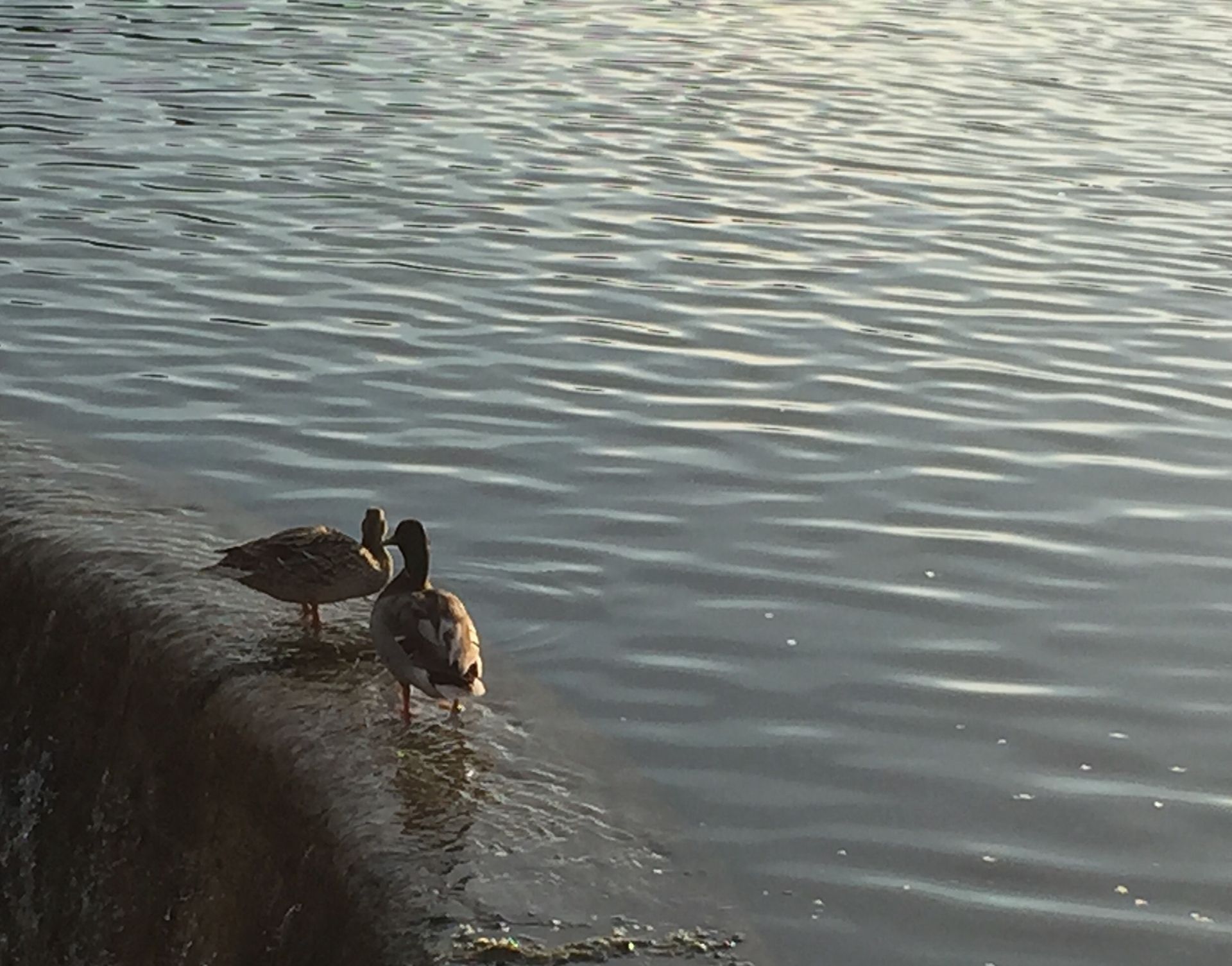
December 6, 2023
With the school year now over, it is a great time to introduce your children to the idea of helping with summer landscaping. Getting your children outdoors to participate in yard work can be both fun and educational! Plant native plants! Native plants come in a variety of shapes, scents, and beautiful colors which can be very stimulating for children to see as they bloom. They are also very hearty plants and require minimal maintenance, so they are not demanding on a family’s busy summer schedule.

December 6, 2023
Native perennials are not only aesthetically pleasing and beneficial to local flora and fauna, but also a great means of erosion control. Root systems of perennials are exponentially deeper than standard turf grass and persist for years. Roots can anchor down into the soil up to 15 feet, making them great soil stabilizers. These roots are also able to capture phosphorus runoff before they can reach our ground water supply. As we know, phosphorus run-off from agricultural production is a culprit in producing blue-green algae blooms in our Wisconsin lakes and rivers. Also with great big roots, perennials can out-compete weeds or harmful invasive species, reducing the need for toxic herbicide application. Additionally, these roots establish channels throughout the soil, providing aeration, water, and nutrient flow for neighboring plants. Perennials provide moisture to soil, making the soil less prone to drying out and erosion. Deep roots can reach nutrients that are not found in top soil. Perennials bring these out-of-reach nutrients to other plants which can benefit. These long root systems take in all the nutrients perennials need, requiring less work from the gardener. Formecology just recently completed a shoreline project at Frank Lloyd Wright’s John Pew House residence in which we installed erosion control measures on a hillside facing Lake Mendota. We blanketed the hillside with Envirolok, LLC native vegetative mats. The beauty of these perennial mats is that they provide an instant plant matrix to make the hillside stronger against erosion over time as the roots grow. We are very excited to see the hillside grow and bloom in years to come.

December 6, 2023
Working on a variety of sites we have seen the growing presence of jumping worms. Often our team will see crumbly, granular, loose soil—a sure sign of their invasion. You may have heard their name mentioned, “Asian jumping worms”, “crazy worms”, or “snake worms”, in horticultural contexts. Normally earthworms are beneficial to soil and plant health, however, these invasive species are destructive with a multitude of effective survival tactics. They first appeared in Wisconsin in 2013, and still there is much uncertainty regarding how they are to be eradicated. There are a few treatments available on the market that we at Formecology may try out for our clients. Before then, we will have to do some test runs. With awareness, background knowledge of their life history and appearance, and management, we can ensure a healthier ecosystem. There is a lot to consider here and research to be done in the coming years. We would love to hear your experiences (successful or not) in dealing with these crazy worms. Leave us a comment below! Appearance: “dry” appearance with bluish sheen. White clitellum (band in which the eggs are produced) and a length of 6-8 inches. Worms famously exhibit a fast “flailing” motion. This rapid thrashing helps escape predators with a 50% chance of survival. Presence often marked by pelleted soil clumps on soil surface. How They Spread: commercial compost and mulch, nursery stock, leaf piles, fish bait, raking, leaf blowing. Problem: Jumping worms wreak havoc to soil and plant health. They grow and reproduce more rapidly and consume more nutrients than any other earthworm in Wisconsin. Additionally, their eggs are protected by a cold and drought resistant cocoon that can withstand -40 degrees Fahrenheit! These cocoons are about the size of a mustard seed and are dark brown in color—easily hidden amongst soil. Jumping worms are parthenogenic, meaning they do not require a mate to reproduce. Worms typically produce up to 60 cocoons per clutch and can complete 2 generations within one year. These worms move fast too, expanding their territory up to 40 yards a year. These worms feed on plant roots, and beneficial mycorrhizae fungi, and disturb healthy soil. Soil affected by jumping worms has decreased moisture, compacted soil, increased erosion, and an increased risk of pathogens. This soil proves to be poor in structure and support for plants. In turn, this soil harbors a poor quality environment for native plants to grow and gives invasive plant species a chance to establish themselves. In a jumping worm-invaded habitat canopy cover may be thinned out as well as ground cover. The lack of vegetation exposes ground dwelling critters to potential predators resulting in reduced biodiversity of animals. Another issue presented by the worms is their 80% bio-accumulation of airborne heavy metals. Animals consumed by humans, such as chickens, eat these worms, and the heavy metals are passed down to humans causing potential health issues. Where: Dwell on soil surface, no deeper than 2-4 inches below the soil. Life Cycle: APR-MAY: worms hatch from egg/cocoon JUN-JUL: worms feed & grow ßthis is the best time to conduct an initial treatment AUG-SEP: worms lay eggs ß best time to conduct 2 nd treatment 1 ST FREEZE: adult worms die WINTER: eggs are protected in cocoons Management: Prevention: Buy landscape materials (plants, compost, mulch) free of cocoons and worms. Purchase mulch and compost that has been heated to 140 degrees Fahrenheit. Cocoons cannot survive beyond 104 degrees as well as pathogens. The Flower Factory nursery (located in Stoughton) has a 100% jumping worm-free guarantee as they sterilize their soil. If spotted: remove and destroy worms by sealing in a bag and throwing away. Apply treatment. Treatments: Early Bird: Advertised as a 3-0-1 fertilizer that was originally developed for golf course turf. Contains chicken droppings, kelp, and tea seed oil. The solution is potent and is to be diluted 20x before application. It is not recommended to spray an entire soil patch affected by worms, rather apply to new plants being introduced to the garden. If you do end up treating a large portion of soil, ensure the solution does not go further than 6 inches below, as that is where beneficial earthworms dwell. Within 10 minutes of application worms come to the soil surface. Within 20 minutes the worms are dead. Something to consider is that Early Bird lake run-off could harm fish. Finely-ground Biochar: Just a small amount added to infested soil can kill worms in 16 days. The sharp edges of the charcoal are designed to cut the guts of the worms. A question that popped into our heads: is biochar selective for crazy worms, or does it harm beneficial worms as well? Fungus: Bavaria bassiana (BotaniGard): Secretes enzymes that weaken bugs’ coats. Effectively kills worms in two weeks and kills approximately a ¼ of cocoons. We wonder if this fungus would be harmful to beneficial insects, like our pollinators. While it is too late in the season for treatment application, Formecology is keeping its eyes out for new, eco-friendly, safe solutions. Stay tuned!

December 6, 2023
It’s hard to believe that winter is right around the corner. We have enjoyed a great season and hope you have also. Before the snow begins to fall, we wanted to take an opportunity to remind you of some important fall landscape maintenance tips that will help to provide a healthy yard and lawn in the spring. Lawn Mowing – It is recommended to have your lawn short for the fall and winter months. This will prevent a buildup of dead grass in the spring that may smother new growth. Sprinkler System Winterization – By shutting down the water supply and filling the pipes with pressurized air you are able to blow out all remaining water. This will help prevent pipes from breaking due to the water freezing in them. Leaf Clearing & Removal- Fall is one of the times when the cool season grasses will revitalize themselves if given sufficient sunlight, nutrients, and water. A thick and/or matted layer of fallen leaves will cast excessive shade over the grass below and deprives the grass of sunlight. Lawns also need to breath during the winter and fall leaves can smother the grass if left on top. Lawn Aeration – Fall is great time for lawn aeration because it reduces soil compaction and allows water & fertilizer to seep into the root zone. Lawn Fertilizer – Fall is the most important time for fertilization since the lawn has passed through the stressful summer months and needs food to rebuild itself. In addition, during fall season there is less competition from weeds, insects, and diseases. Nutrients are required to take full advantage of the cool weather growth period to restore the lawn and prepare it for the next summer Fall flower bed clean ups and pruning – To be ready to sprout new growth next season your flower beds need to be cut back or divided, the vegetable garden needs to be cut down, and new mulch needs to be added to protect plants from winter freeze. It is also recommended to prune back the trees and shrubs to prevent winter damage. Contact Formecology, LLC to assist with your fall maintenance/clean-up needs – the snow will be falling soon!

December 6, 2023
Fall is the best time to plant flowering trees, shrubs & perennials –the temps are cooler and typically we have more rain. Landscape contractors also love to build hardscape features like patios, retaining walls and walkways in the fall. The cooler temps are perfect for laying heavy natural stone.

December 6, 2023
With the school year now over, it is a great time to introduce your children to the idea of helping with summer landscaping. Getting your children outdoors to participate in yard work can be both fun and educational! Plant native plants! Native plants come in a variety of shapes, scents, and beautiful colors which can be very stimulating for children to see as they bloom. They are also very hearty plants and require minimal maintenance, so they are not demanding on a family’s busy summer schedule.
Eco-friendly sustainable landscaping.
Expertly designed, installed and maintained.
Tell us more about your landscape project!
Throughout our 27 year history, we have been quite different than other landscape design-build companies – we don’t limit ourselves to simply beautifying the landscape.

